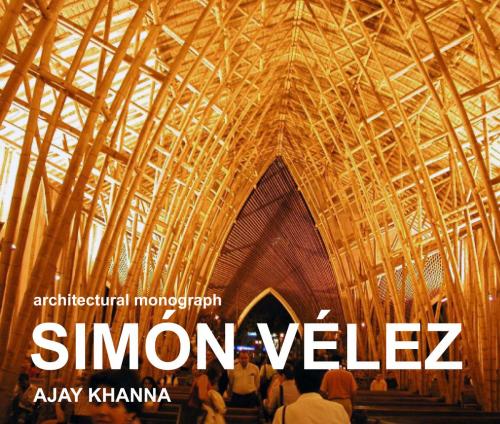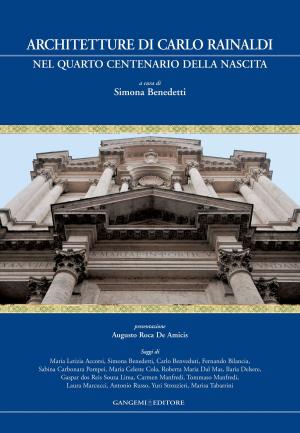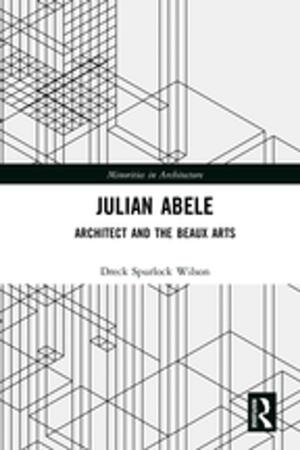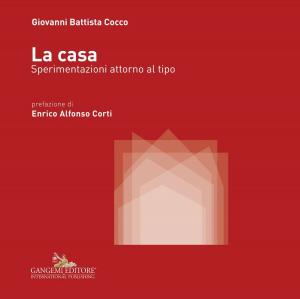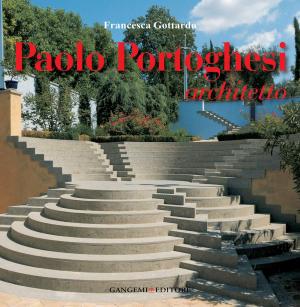SIMÓN VÉLEZ
architectural monograph
Nonfiction, Art & Architecture, Architecture, Individual Architect| Author: | Ajay Khanna | ISBN: | 9780956823809 |
| Publisher: | The Office of London Architecture and Urbanism Private Limited | Publication: | September 9, 2014 |
| Imprint: | The Office of London Architecture and Urbanism Private Limited | Language: | English |
| Author: | Ajay Khanna |
| ISBN: | 9780956823809 |
| Publisher: | The Office of London Architecture and Urbanism Private Limited |
| Publication: | September 9, 2014 |
| Imprint: | The Office of London Architecture and Urbanism Private Limited |
| Language: | English |
Architect Simón Vélez (b.1949 in Manizales, Colombia) has pioneered the use of structural bamboo since he first started out on his own at the age of 23. An extraordinary draughtsman with an intuitive sense of structural engineering, he has built over 250 structures using structural bamboo or guadua.
Simón Vélez has designed structural bamboo buildings in Germany, France, the United States, Brazil, Mexico, China, Jamaica, Colombia, Ecuador and India. He has been invited by the Vitra Design Museum in Germany and the Georges Pompidou Centre in France, to conduct masterclasses.
In 2000, he was asked to construct a large pavilion in structural bamboo in Hannover, Germany for the World Expo. Building this pavilion alongside his friend and contemporary Shigeru Ban's paper cardboard tube pavilion for the same site, Vélez's circular bamboo structure, which was 40 metres in diameter, used over 3,500 structural bamboo stems. Forty workers flown in from Colombia built this pavilion, for which no heavy machinery such as cranes was required despite the scale of the building operations.
Vélez's buildings exude the language of human craftsmanship, a tradition that has rapidly lost validity in the heavily mechanised construction environment of the western world. Simón Vélez sees himself in the tradition of the master-builder working with a guild of highly skilled craftsmen, with the architect at the top of the hierarchy. Often this collaboration between architect and builder produces an incredible flexibility in the construction of buildings as decisions are made and changed while the building is going up on site.
A highly dynamic sole practitioner, Simón Vélez's body of work stands out, not only for his highly charged 'signature' - his buildings inevitably carry indelible marks of his creativity - but also for the drawing process through which structures are
produced from the day that they are conceived to being executed on site. Simón Vélez's practice raises critical questions about contemporary, western architectural practice where the typology of the site has almost become invisible. Since most work is drawn digitally in an office environment as opposed to Vélez's intense manual processes on site, the site as an architectural typology has disappeared. It has become another piece of graphic entity on a computer screen to be manipulated mostly in an office environment. Simón Vélez's working methods constitute long stretches of drawing on site and the communication of these drawings on site, to the craftsmen through conversations.
Simón Vélez is perhaps one of the last remaining practitioners of the process where the human hand is the origin of an entire architecture.
This book endeavours to question critically the validity of what we have lost and what we have gained with the onset of the digital era.
In December 2009, Simón Vélez received The Principal Prince Claus Award for his contribution to a positive interaction between culture and nature. This prestigious Dutch award, founded by Prince Claus, was awarded to Simón Vélez for his combination of innovation, traditional references and sustainability, while managing to create a contemporary architecture that reflects modern sensibilities and desires.
Architect Simón Vélez (b.1949 in Manizales, Colombia) has pioneered the use of structural bamboo since he first started out on his own at the age of 23. An extraordinary draughtsman with an intuitive sense of structural engineering, he has built over 250 structures using structural bamboo or guadua.
Simón Vélez has designed structural bamboo buildings in Germany, France, the United States, Brazil, Mexico, China, Jamaica, Colombia, Ecuador and India. He has been invited by the Vitra Design Museum in Germany and the Georges Pompidou Centre in France, to conduct masterclasses.
In 2000, he was asked to construct a large pavilion in structural bamboo in Hannover, Germany for the World Expo. Building this pavilion alongside his friend and contemporary Shigeru Ban's paper cardboard tube pavilion for the same site, Vélez's circular bamboo structure, which was 40 metres in diameter, used over 3,500 structural bamboo stems. Forty workers flown in from Colombia built this pavilion, for which no heavy machinery such as cranes was required despite the scale of the building operations.
Vélez's buildings exude the language of human craftsmanship, a tradition that has rapidly lost validity in the heavily mechanised construction environment of the western world. Simón Vélez sees himself in the tradition of the master-builder working with a guild of highly skilled craftsmen, with the architect at the top of the hierarchy. Often this collaboration between architect and builder produces an incredible flexibility in the construction of buildings as decisions are made and changed while the building is going up on site.
A highly dynamic sole practitioner, Simón Vélez's body of work stands out, not only for his highly charged 'signature' - his buildings inevitably carry indelible marks of his creativity - but also for the drawing process through which structures are
produced from the day that they are conceived to being executed on site. Simón Vélez's practice raises critical questions about contemporary, western architectural practice where the typology of the site has almost become invisible. Since most work is drawn digitally in an office environment as opposed to Vélez's intense manual processes on site, the site as an architectural typology has disappeared. It has become another piece of graphic entity on a computer screen to be manipulated mostly in an office environment. Simón Vélez's working methods constitute long stretches of drawing on site and the communication of these drawings on site, to the craftsmen through conversations.
Simón Vélez is perhaps one of the last remaining practitioners of the process where the human hand is the origin of an entire architecture.
This book endeavours to question critically the validity of what we have lost and what we have gained with the onset of the digital era.
In December 2009, Simón Vélez received The Principal Prince Claus Award for his contribution to a positive interaction between culture and nature. This prestigious Dutch award, founded by Prince Claus, was awarded to Simón Vélez for his combination of innovation, traditional references and sustainability, while managing to create a contemporary architecture that reflects modern sensibilities and desires.
